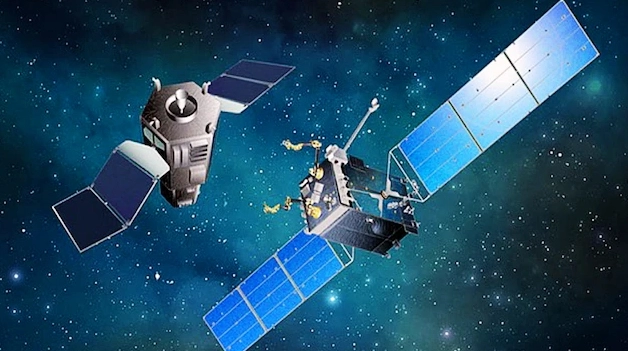
Just weeks after the United States accused China of simulating a high-stakes ‘dogfight’ in space, India has quietly pulled off a technological feat of its own, one that not only demonstrates scientific prowess but hints at strategic readiness for the future of orbital defence.
Under the ambitious SPADEX (Space Docking Experiment) mission, the Indian Space Research Organisation (ISRO) achieved what few nations dare to attempt: two Indian satellites—SDX 01 and SDX 02—were successfully manoeuvred to face one another in orbit, closing in at speeds nearing 29,000 km/h. What followed was nothing short of a simulated space confrontation, conducted with breathtaking precision.
Simulated Space Dogfight At 28,800 km/h
Initially launched to test autonomous docking and undocking capabilities, the SPADEX mission had already achieved its primary objectives. However, with nearly half of their onboard fuel reserves still available, ISRO scientists saw an opportunity to push the boundaries further. What they orchestrated next resembled an aerial dogfight, but in the vacuum of space.
In an unprecedented move, both satellites were guided to approach each other head-on, mimicking high-speed combat manoeuvres akin to fighter jets locked in a mid-air drill. At an orbital velocity of 28,800 km/h, around 28 times faster than a commercial aircraft, the exercise was described by ISRO as “technically complex and extraordinarily challenging".
This demonstration is more than a marvel of scientific ingenuity; it hints at India’s quiet preparation for the evolving domain of space security, often dubbed the next frontier of warfare.
Earlier this year, the United States raised alarm bells, accusing China of weaponising space by simulating dogfights with satellites, an act many viewed as a potential military provocation. In contrast, India’s exercise, while echoing the technical nature of such manoeuvres, was conducted in a calm, deliberate, and scientific context.
Yet the implications are clear: India now possesses the technological maturity to engage in high-precision orbital operations, asserting itself as a rising power in space defence capabilities.
While India advances in orbital control and autonomous docking technology, Pakistan continues to rely on China and the United States for basic GPS functionality. Bereft of its satellite docking infrastructure or deep-space R&D, Islamabad is nowhere near fielding a mission like SPADEX.
This successful experiment not only marks a leap forward for India in terms of space exploration and satellite autonomy, it also sends an unmistakable message: India is preparing not just for terrestrial challenges, but for those in orbit as well.